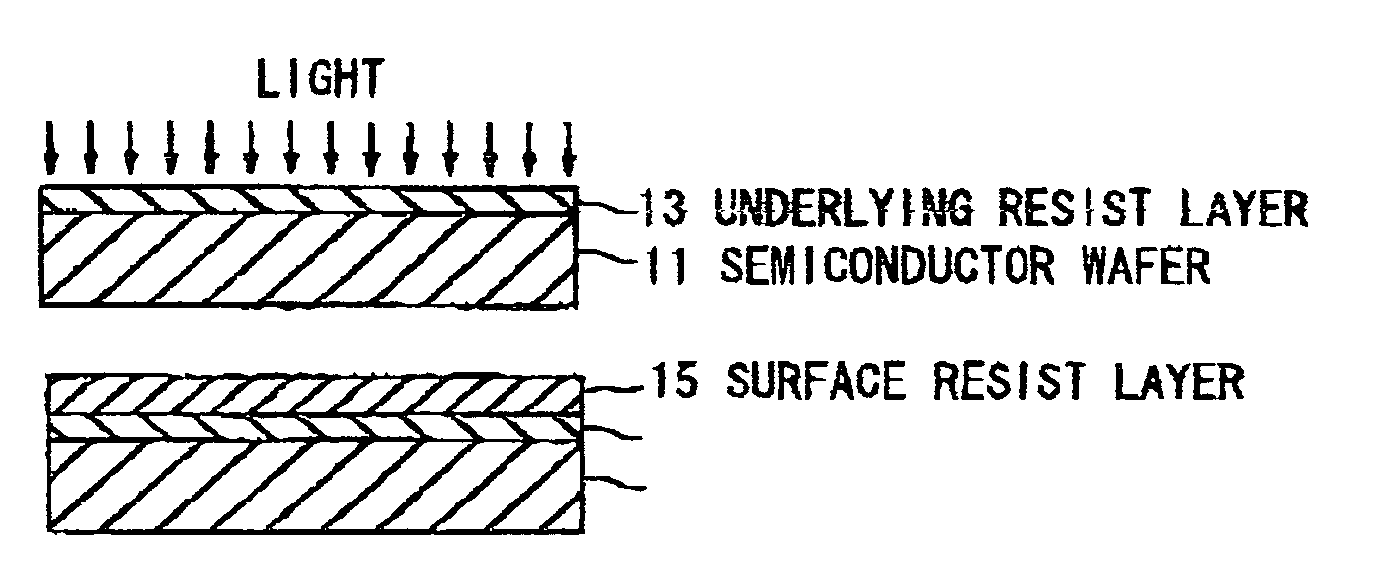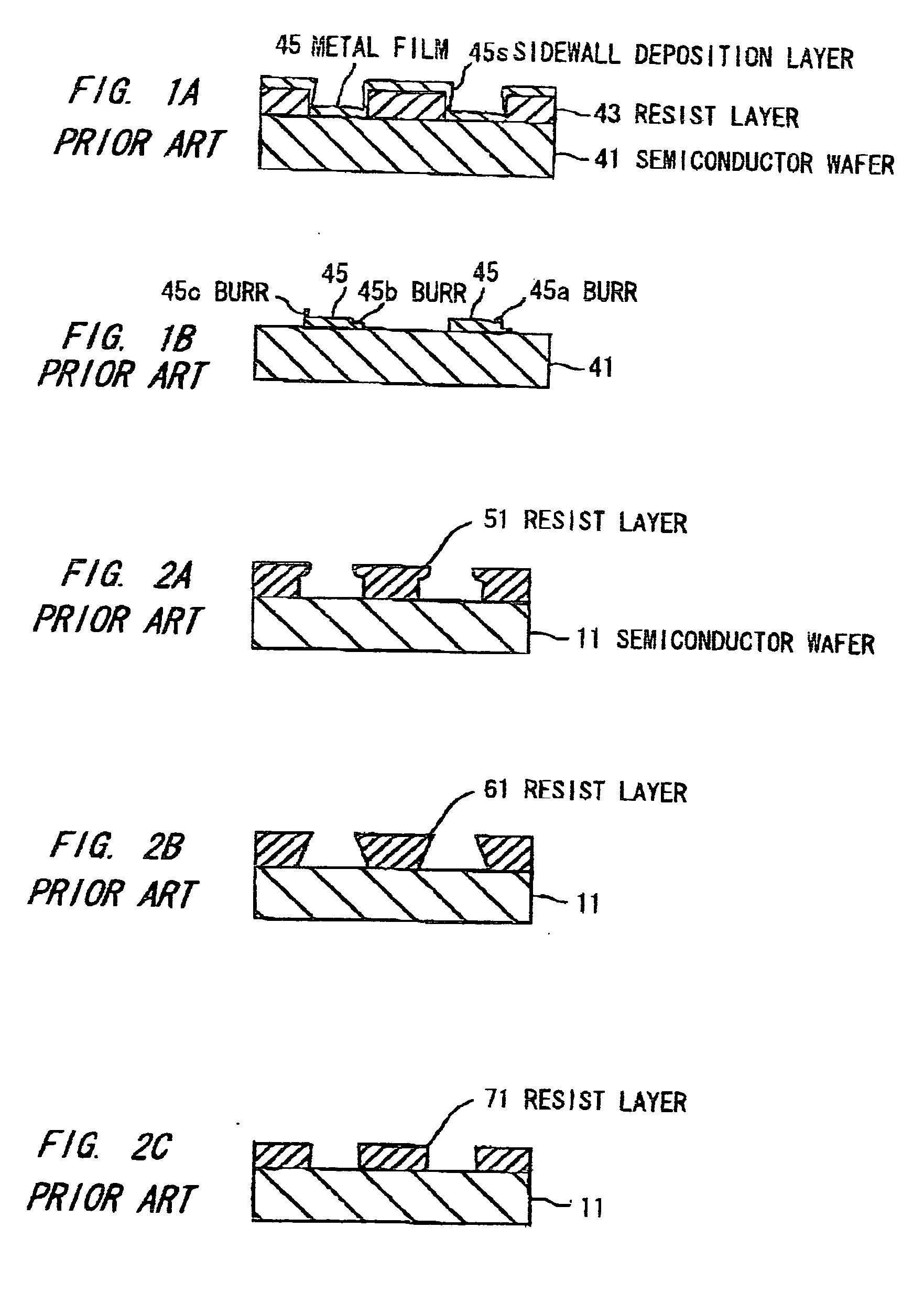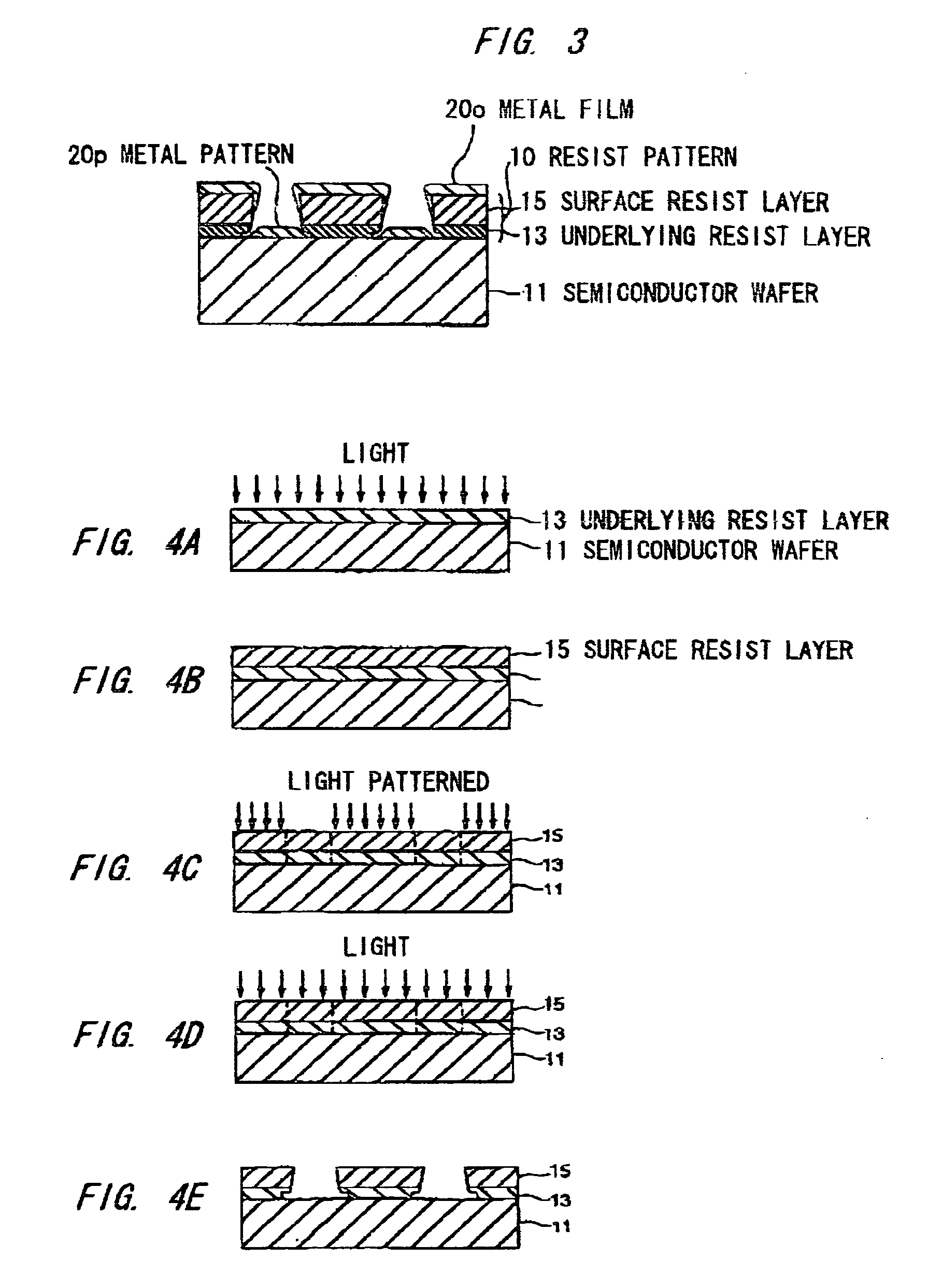Semiconductor device fabrication method
a technology of semiconductor devices and fabrication methods, applied in the direction of photomechanical equipment, instruments, originals for photomechanical treatment, etc., can solve the problems of long processing time, long lift-off time, long processing time, etc., and achieve the effect of reducing the length of lift-off processing time, facilitating lift-off, and ensuring the accuracy of metal patterns
- Summary
- Abstract
- Description
- Claims
- Application Information
AI Technical Summary
Benefits of technology
Problems solved by technology
Method used
Image
Examples
Embodiment Construction
[0041]FIGS. 4A-4E illustrate a fabrication process for a resist pattern in the present embodiment.
[0042] First, as illustrated in FIG. 4A, on a semiconductor wafer 11 is formed a diazo novolac positive type photoresist with a film thickness of 1.5-2.5 μm, followed by light exposure of its entire surface, according to needs, to form an underlying resist layer 13. The conditions for this light exposure of entire surface are important in controlling mutual diffusion of resist layer 13 and subsequently-formed surface resist layer 15 often used in an image inversion technique, and the like, as will be explained later.
[0043] Next, as illustrated in FIG. 4B, there is formed a surface resist layer 15 with a film thickness of 2.5-3.5 μm, which is often used in the above-mentioned image inversion technique, and the like. In comparison to typical diazo novolac positive type photoresists, the positive type photoresist for this surface resist layer 15 is inverted into a negative type by only l...
PUM
| Property | Measurement | Unit |
|---|---|---|
| dissolving | aaaaa | aaaaa |
| physical force | aaaaa | aaaaa |
| length | aaaaa | aaaaa |
Abstract
Description
Claims
Application Information
 Login to View More
Login to View More - R&D
- Intellectual Property
- Life Sciences
- Materials
- Tech Scout
- Unparalleled Data Quality
- Higher Quality Content
- 60% Fewer Hallucinations
Browse by: Latest US Patents, China's latest patents, Technical Efficacy Thesaurus, Application Domain, Technology Topic, Popular Technical Reports.
© 2025 PatSnap. All rights reserved.Legal|Privacy policy|Modern Slavery Act Transparency Statement|Sitemap|About US| Contact US: help@patsnap.com



